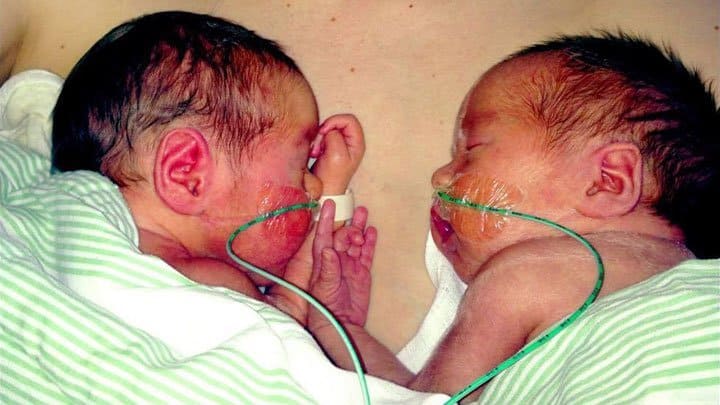TTTS infants more at risk of persistent pulmonary hypertension
Researchers from the Netherlands* have looked into persistent pulmonary hypertension (PPHN) and whether or not infants with Twin to Twin Transfusion Syndrome (TTTS) are more at risk. Persistent pulmonary hypertension is a disorder that describes the failure of the normal circulatory transition that occurs in a baby’s body after birth. The baby’s blood vessels don’t open up properly around the time of birth and the pressure inside them remains high. The blood flow to the lungs is limited. There isn’t enough oxygen in the bloodstream and the body doesn’t have enough oxygen for the brain and other organs. It’s a serious condition and can be life threatening in severe cases.
*The study was published in Neonatology. Read more about the study.
Recipient baby is more at risk
Results of the study showed that 4 percent of TTTS twins experienced persistent pulmonary hypertension. In uncomplicated monochorionic twin pregnancies it was 0,4 percent. This means that – according to this study – TTTS babies have a 10-fold increased risk of getting the disorder. The researchers also found risk factors that increase the likelihood of persistent pulmonary hypertension. They were severe prematurity and recipient status. This means that recipient babies are more at risk than donor babies. In TTTS recipients, another risk factor is anemia at birth.
Guidelines for the birth of TTTS twins
Severe persistent pulmonary hypertension is difficult to predict and the researchers advise that all TTTS twins are delivered in a tertiary care centre with inhaled nitric oxide (iNO) treatment options. Inhaled nitric oxide treatment is typically administered in the Neonatal Intensive Care Unit using a device that delivers a drug in constant concentrations. The drug widens the opening of blood vessels in the lungs.














